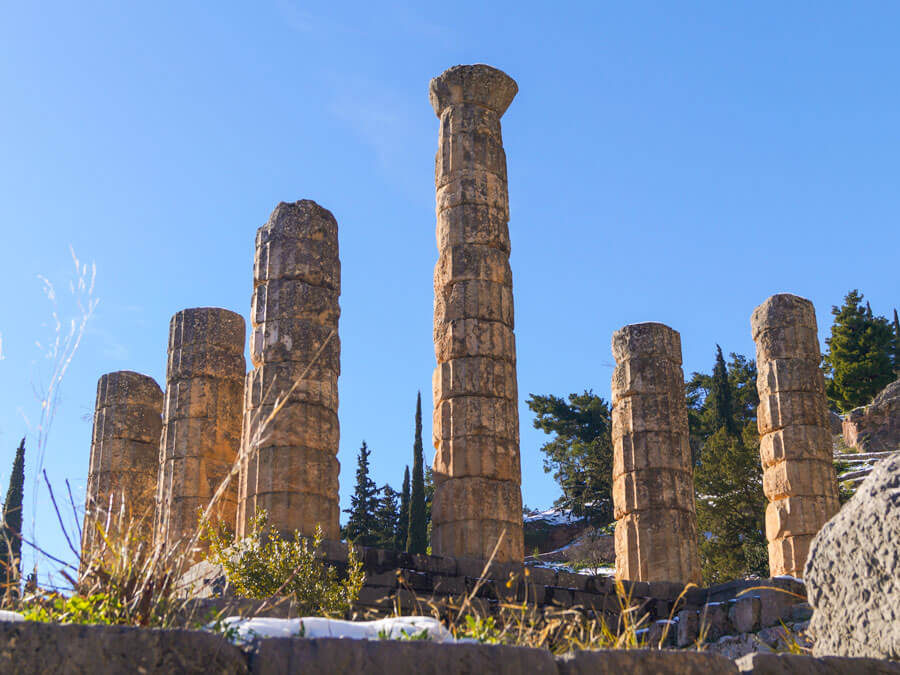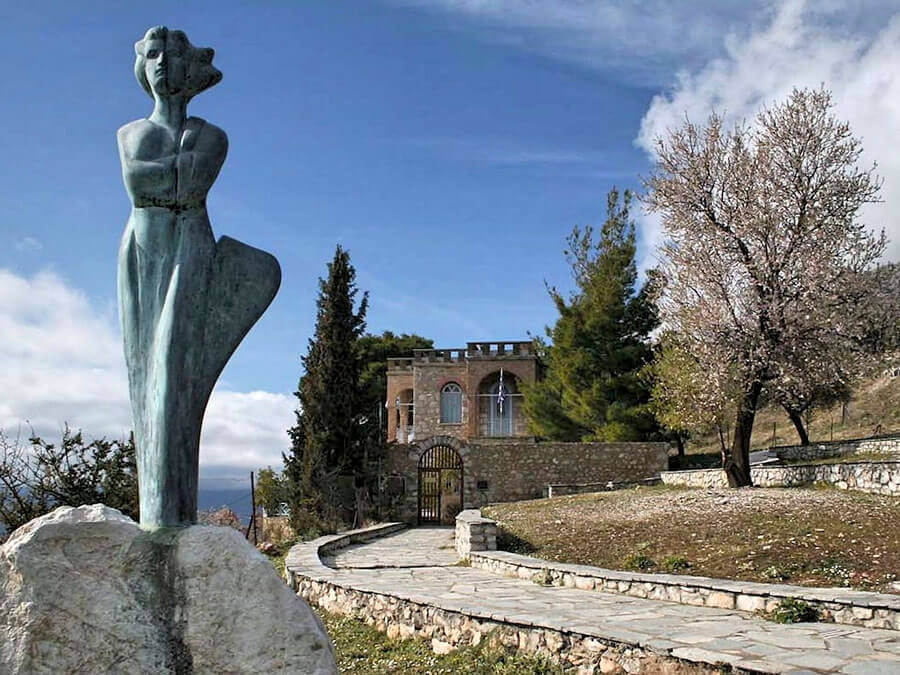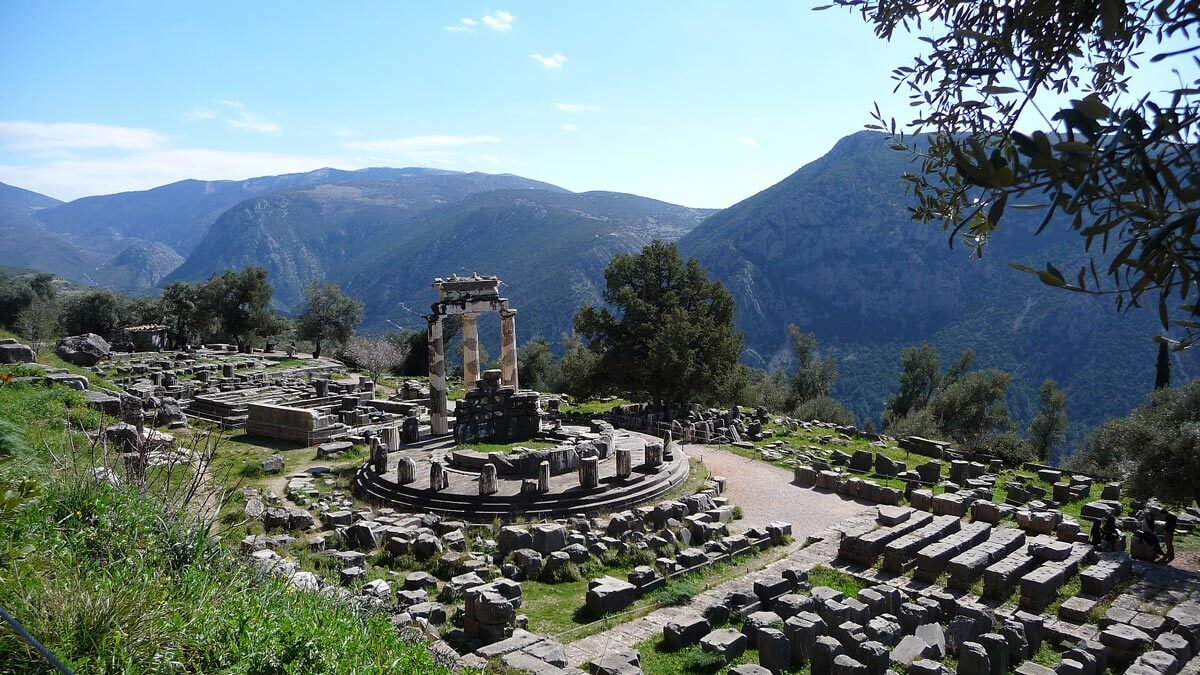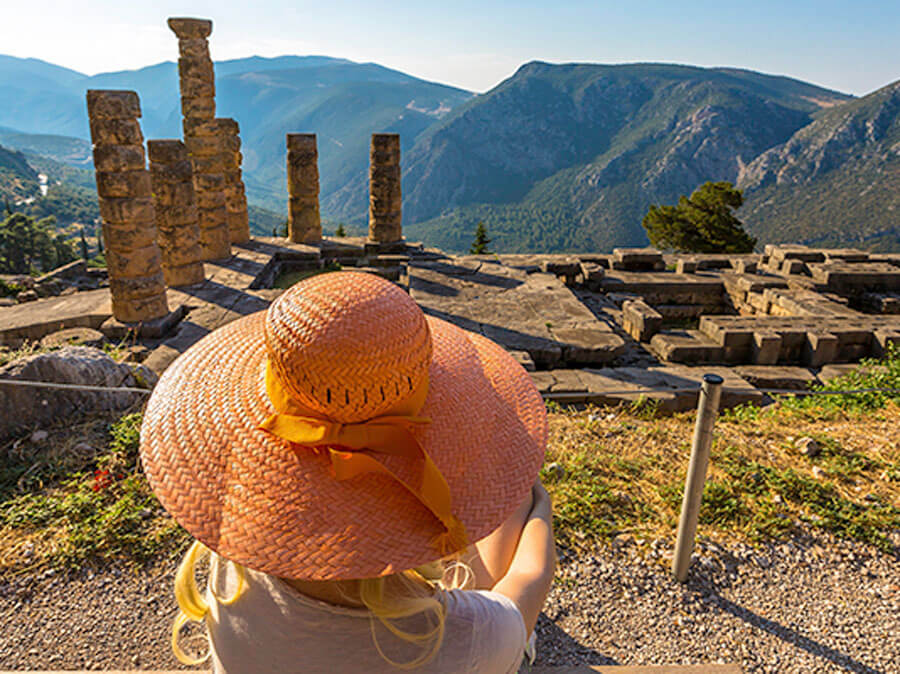The Sanctuary of Delphi was a place of worship at first of Mother Earth (mother of gods and humans, but also the source of life in the world). It later became the Sanctuary of Apollo, the god of light, music and dance, after the Olympians replaced the primordial gods. Under the protection and administration of the Amphictyony League (a religious association of ancient Greek cities), the Delphic sanctuary ensured its autonomy and increased its religious status and political influence in the Mediterranean world. Once a year, people from all over the Mediterranean would travel to Delphi to pray and connect. For some, this travel would last for months.
Great gatherings need great events to excite the public and Delphi had its own festival: the Pythian Games! The Pythian Games were one of the four Panhellenic Games of Ancient Greece. They were held two years after each Olympic Games, and between each Nemean and Isthmian Games. They were held in honor of god Apollo, supposedly after he slew the mythical dragon Python and set up the oracle at Delphi. Initially, the games consisted of art and dance competitions, and later athletic competitions were added. The winners were crowned with a wreath of bay laurel, sacred to Apollo.
![Credit: Albert Tournaire [Public domain] Representation of the Sanctuary of Apollo by A. Tournaire (1894)](/images/Blog/Delphic%20Idea/Ancient-Delphi.jpg)
Six months before the start of the Pythian Games, nine citizens from Delphi, called Theoroi, would start traveling across the Greek cities to announce the beginning of the games and to declare the start of the Sacred Truce (Hierominia), aiming to protect the athletes and the travelers that would travel to Delphi. Any city that would be involved in robberies or armed conflicts during that period would be banned from the games and the sanctuary of Apollo, unable to consult the Oracle. After the fall of the Greek city-states to the Roman and later the rise of Christianity in the 4th century AD, Delphi remained an active sacred (now pagan) site and the Pythian Games were celebrated at least until 424 AD.
Unfortunately, after that time, sources about Delphi and the sanctuary were not found. Eventually, the Sanctuary of Apollo got buried under the mountains from too many earthquakes. Centuries later, new residents found their homes there, over the ancient ruins. Lord Byron visited Delphi in 1809:
"Yet there I've wandered by the vaulted rill;
Yes! Sighed o'er Delphi's long deserted shrine,
where, save that feeble fountain, all is still."
After the modern village of Delphi was partially destroyed by another earthquake, the villagers were eventually relocated to a new area and excavations started. Slowly, the most important archaeological site of the Greek word started taking shape before the archaeologists’ eyes. After its glorious revelation, a new idea began to take shape. The idea of peaceful coexistence of different people in antiquity under a common purpose and the interchange of knowledge and culture functioned many centuries later as a source of inspiration for the Greek poet Angelos Sikelianos (1884-1951) and his American wife, Eva Palmer, to give birth to the Delphic Idea.

In the Delphic Idea envisioned by Sikelianos, the ancient but at the same time always current universal human values of Ancient Greek civilization were concentrated: freedom, humanity, brotherhood, peace, prosperity and unity. The Sikelianos couple believed that Delphi could serve as a focal point for solidarity of people all over the world and for the preservation of classical, universal values, like the strengthening of a harmonious and peaceful coexistence and the interdisciplinary interaction of culture, art and modern technologies in science.
Sikelianos and Palmer attempted to put into practice the Delphic Idea with the Delphic Festivals. Two festivals were held in Delphi, one in 1927 and the other in 1930, both funded by the couple. People from all over the world arrived in Delphi and participated in events, similar to the original events that were taking place in the Delphic Games of antiquity. An ancient Greek tragedy was performed in the ancient theater of Delphi; athletic competitions in the ancient stadium took place; but also musical and dancing events and lectures about the value of the art of loom and the importance of folk art. During those two international festivals, Delphi became once again the Omphalos of the World.

Unfortunately, the couple had little support and their vision was not fulfilled. But the seed of their vision, the Delphic Idea, was planted in many people’s heart. Today, the European Cultural Centre of Delphi (ECCD) and the Museum of Delphic Festivals (formerly the home of Angelos and Eva) maintain the faith and hope that one day Delphi will become a worldwide intellectual center. Moreover, the International Delphic Academy is a non-profit organization with the goal of spreading the Delphic Idea by establishing an international scientific academy base in Berlin and a workplace in Delphi.

Delphi, as mentioned above, had established the first Amphictyony League, one of the most important historical institutions of antiquity, which many compare to the United Nations. The purpose of Amphictyony was to ban hostilities between its members, while its decisions were binding. Sikelianos saw ancient Greek culture and all that Delphi represented as an invaluable storehouse of human values and the ideal platform for international cooperation. Various initiations keep the poet’s dream alive and, who knows, maybe one day his vision will become a reality and Delphi will once again become the Navel of the World.
If you are visiting Greece and you wish to take a trip to Delphi, you can join our guided tour to Delphi from Athens, the focus of which is the values of Delphi and the ‘Delphic Commandments’. You can also have a look at our article about the top things to do in Delphi.




